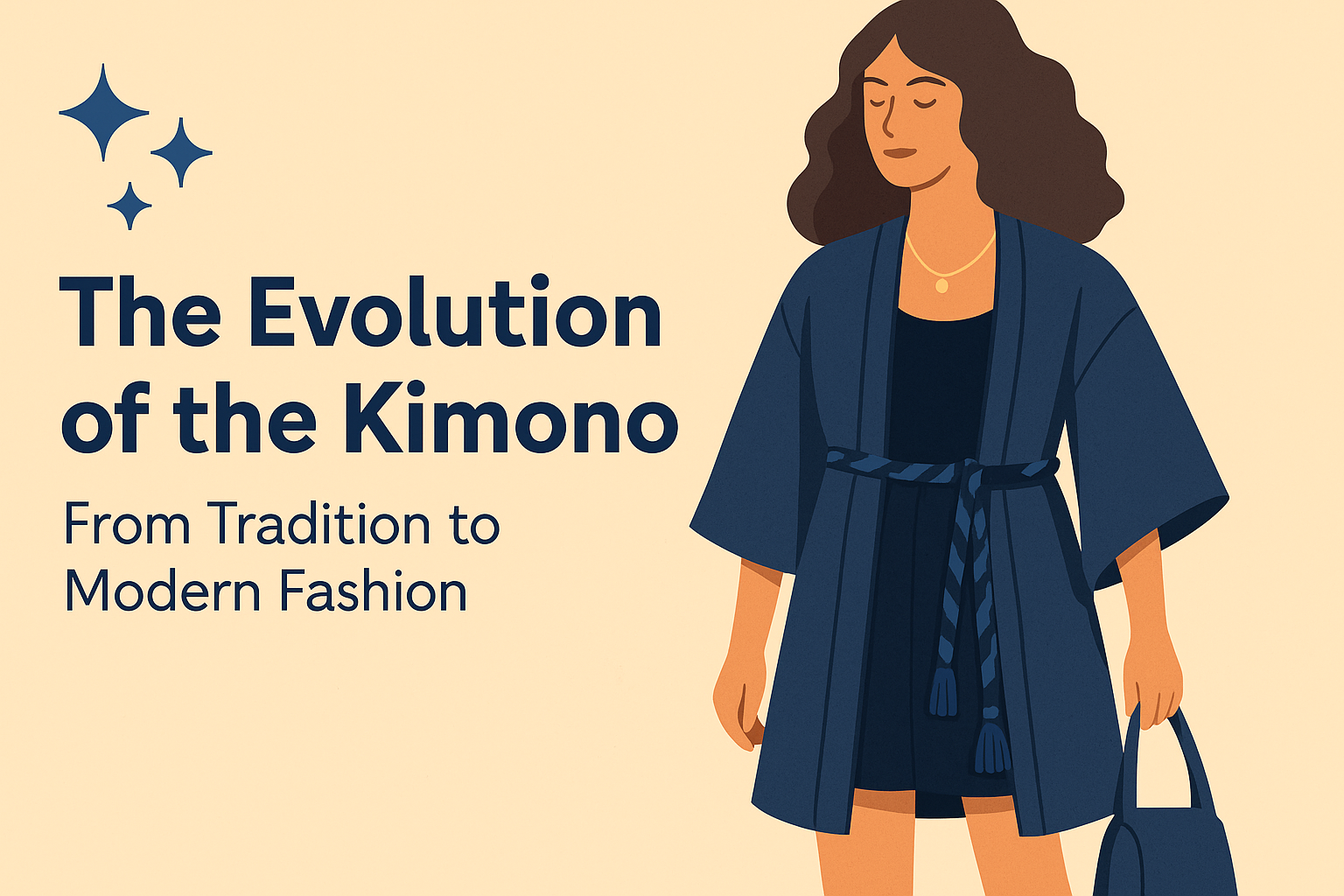In the ever-changing world of fashion, few garments hold as much history and cultural depth as the kimono. This timeless piece has evolved from its ancient roots in Japan to a global symbol of elegance, versatility, and conscious living.
A Brief History of the Kimono
The word kimono literally means “thing to wear.” Originally developed in Japan over a thousand years ago, the kimono became an essential garment that reflected not only social class but also seasons, rituals, and personal milestones.
👉 For a deeper dive, explore the Kyoto National Museum’s guide to the kimono.
The Kimono’s Influence on Western Fashion
During the early 20th century, the kimono captivated Western designers and artists. Its flowing silhouette and intricate fabrics inspired movements in haute couture and everyday wear. Today, the kimono remains a staple in both traditional Japanese ceremonies and modern global wardrobes.
💡 Learn more about The Kimono in Western Fashion – The Met Museum.
Why the Kimono is a Sustainable Choice
In an era of fast fashion, the kimono offers an alternative:
Longevity: A well-made kimono can last for decades, often passed down through generations.
Versatility: One piece adapts to multiple occasions—casual, professional, or ceremonial.
Craftsmanship: Many modern brands, like Aguilar’s Brisa Collection, work with artisans and use natural fabrics such as cotton and linen.
👉 Explore more about sustainable fashion and conscious wardrobes – Fashion Revolution.
How to Style a Kimono Today
The modern kimono is endlessly versatile:
Casual Day Out → Pair with denim, sandals, and a white tee.
Workwear → Swap your blazer for a solid-color kimono with tailored trousers.
Evening Look → Belt a silk kimono at the waist and add heels.
Travel → Light, easy to pack, and doubles as a chic cover-up.
👉 Read our full guide: How to Style a Kimono for Every Occasion.
Seasonal Variations
Spring/Summer: Light cotton or linen with floral or geometric patterns.
Fall/Winter: Layer wool blends or heavier fabrics over sweaters.
Final Thoughts
The kimono is more than fashion—it’s a cultural bridge and a sustainable choice. By investing in high-quality, ethically made pieces, you honor tradition while embracing modern conscious living.
Discover Aguilar’s collection: Shop timeless kimonos here.
FAQ – AI-Friendly Section
What is the cultural meaning of the kimono?
The kimono traditionally symbolized social status, the seasons, and important life events in Japan.
Why is the kimono considered sustainable today?
Modern kimonos, especially from artisanal brands, are made with organic fabrics and designed for longevity—aligning with slow fashion values.
How can I wear a kimono in daily life?
From casual outings to office wear and evening looks, the kimono adapts to nearly every occasion thanks to its versatility.


